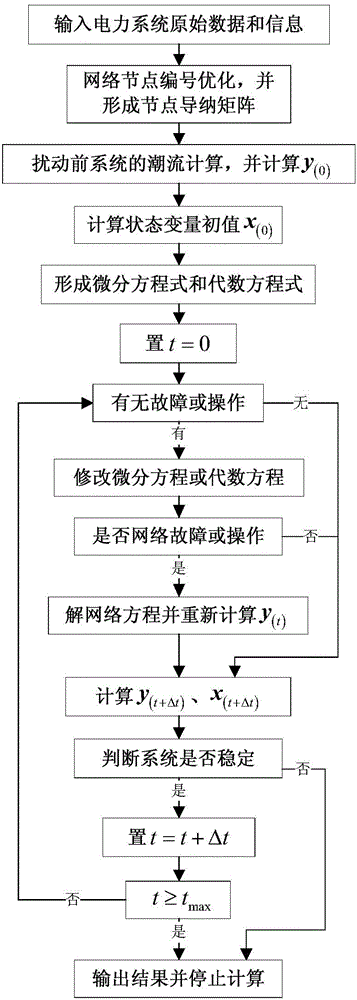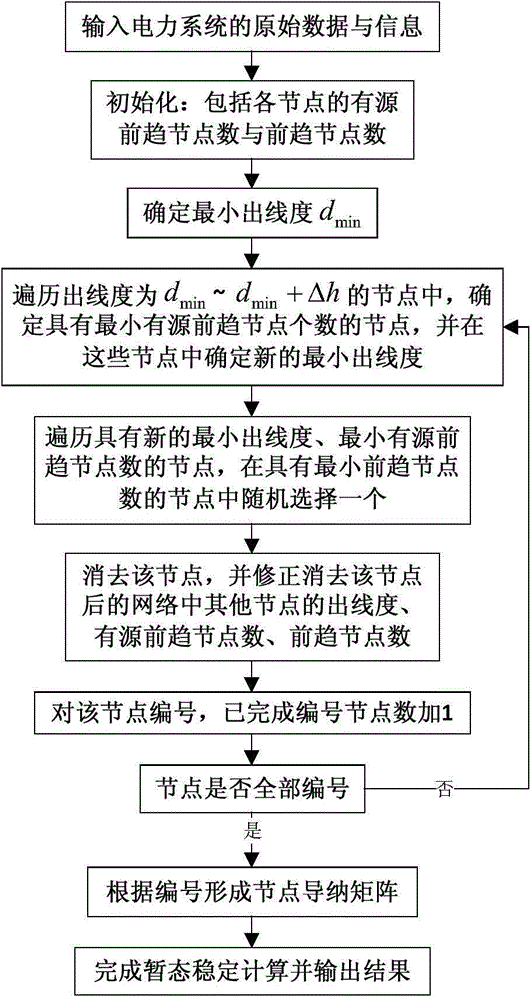Power system transient stability simulation method based on network node numbering optimization
A network node and transient stability technology, applied in the direction of AC network circuits, electrical components, circuit devices, etc., can solve the problems of not considering the power network nodes, etc., and achieve the effect of shortening the path length, speeding up the solution, and improving the simulation speed
- Summary
- Abstract
- Description
- Claims
- Application Information
AI Technical Summary
Problems solved by technology
Method used
Image
Examples
Embodiment Construction
[0047] The present invention will be further described below in conjunction with accompanying drawing.
[0048] like figure 1 As shown, the present invention proposes a power system transient stability simulation method based on the smallest active predecessor node numbering algorithm with a small out-of-line degree, including the following steps
[0049] Step 1: Input the raw data and information of the power system;
[0050] Step 2: If figure 2 As shown, the node numbering algorithm of the power system network is optimized by using the minimum active predecessor node numbering algorithm with a small out-of-line degree:
[0051] 2.1 Initialization, set the number of numbered nodes n=0, each node number f(i)=0, indicating that it has not been numbered, i is the current position of the node, set each node F(i)='false', F(i) ='ture' indicates that node i is the last node added in the connected path subtree of the numbered nodes where it is located, that is, the boundary node...
PUM
 Login to View More
Login to View More Abstract
Description
Claims
Application Information
 Login to View More
Login to View More - R&D
- Intellectual Property
- Life Sciences
- Materials
- Tech Scout
- Unparalleled Data Quality
- Higher Quality Content
- 60% Fewer Hallucinations
Browse by: Latest US Patents, China's latest patents, Technical Efficacy Thesaurus, Application Domain, Technology Topic, Popular Technical Reports.
© 2025 PatSnap. All rights reserved.Legal|Privacy policy|Modern Slavery Act Transparency Statement|Sitemap|About US| Contact US: help@patsnap.com



